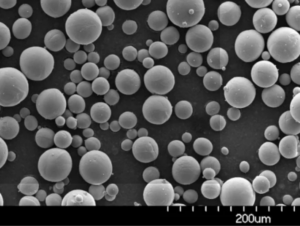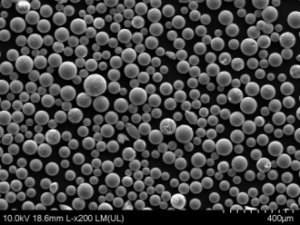焼結硬化合金粉末 は、材料科学の世界では知られざるヒーローである。この驚異的なエンジニアリングは、粉末から固体の構造体を作るために使用される焼結法の利点と、硬化プロセスの利点を組み合わせたものである。このユニークなブレンドにより、強度と耐久性に優れるだけでなく、従来の方法よりも製造が容易でコスト効率に優れた素材が生み出される。材料科学者であれ、エンジニアであれ、あるいは単なる好奇心旺盛な読者であれ、このガイドブックは焼結硬化合金粉末の複雑さを深く掘り下げ、これらの材料を特別なものにしているものについて包括的な考察を提供します。
焼結硬化合金粉末の概要
焼結硬化合金粉末は、焼結プロセス自体で硬化するように設計された特殊な金属粉末です。この二重機能により、追加の熱処理が不要となり、製造時間とコストを削減しながら、高強度と耐摩耗性を備えた部品を製造することができます。これらの粉末は、主に自動車、航空宇宙、工具産業における高性能部品の製造に使用されています。
主なハイライト
- 多彩なアプリケーション:自動車ギアから航空宇宙部品まで、焼結硬化合金粉末は様々な産業で使用されています。
- コスト効率の高い生産:焼結-硬化プロセスは、焼結と硬化を組み合わせることで、追加の処理工程の必要性を低減する。
- 高性能特性:これらの粉末は、強度、靭性、耐摩耗性などの優れた機械的特性を備えています。

焼結硬化合金粉末の組成
焼結硬化合金粉末の組成は、その性能にとって極めて重要である。これらの粉末は通常、鉄などの母材に焼結過程で硬化を促進する合金元素を混合したものです。これらの元素の選択と濃度は、所望の機械的特性を達成するために慎重にバランスされます。
| 金属粉モデル | 構成 | 一次合金元素 | 特筆すべき特徴 |
|---|---|---|---|
| SH-42 | 鉄ベース | ニッケル、モリブデン | 高い靭性、耐摩耗性 |
| SH-55 | 銅ベース | ニッケル、クロム | 優れた耐食性 |
| SH-62 | 鉄ベース | 炭素、マンガン | 硬度と強度の向上 |
| SH-78 | ステンレス | クロム、ニッケル | 高耐食性、良好な硬度 |
| SH-81 | 鉄ベース | クロム、モリブデン | 優れた耐摩耗性と硬度 |
| SH-94 | ニッケルベース | モリブデン、ホウ素 | 高温での高い強度 |
| SH-100 | チタンベース | アルミニウム、バナジウム | 軽量、優れた強度対重量比 |
| SH-120 | 鉄ベース | シリコン、マンガン | 靭性と機械加工性の向上 |
| SH-130 | 銅ベース | 錫、亜鉛 | 良好な導電性、適度な強度 |
| SH-145 | 鉄ベース | カーボン、シリコン | 硬度が向上し、脆さが減少した。 |
これらの粉末はそれぞれ、高い耐摩耗性、靭性の向上、優れた耐食性など、特定の要件を満たすように設計されています。
の特徴 焼結硬化合金粉末
焼結硬化合金粉末の特性は、工業用途において非常に貴重なものです。これらの粉末は、焼結と硬化の両方の利点を1つのプロセスに統合しており、その結果、非常に強靭で耐摩耗性の高い材料が得られます。
機械的特性:
- 強さ:焼結硬化粉末は、高い引張強度と圧縮強度を持つ部品を製造し、耐荷重用途に適しています。
- タフネス:これらの粉末は優れた靭性を持ち、材料がエネルギーを吸収し、破壊に耐えることを可能にします。
- 耐摩耗性:これらの粉末に含まれる硬化成分は、優れた耐摩耗性に寄与し、部品の寿命を延ばします。
物理的特性:
- 密度:焼結硬化粉末は一般的に高密度を達成し、これが機械的強度に寄与する。
- 多孔性:焼結プロセスを制御して気孔率を低減し、より均一な構造と優れた機械的特性を持つ材料を得ることができる。
熱特性:
- 耐熱性:ある種の焼結硬化粉末、特にニッケルやチタンを主成分とする粉末は優れた耐熱性を示し、高温でも機械的特性を維持する。
- 熱伝導率:母材によっては、これらの粉末は熱伝導性に優れ、放熱を必要とする用途に有益です。
焼結硬化合金粉末の利点
焼結硬化合金粉末は、様々な高性能用途に選択される材料となる様々な利点を提供します。
コスト効率:
- 処理工程の削減:焼結と焼入れを一度に行うことで、追加の熱処理の必要性を減らし、時間とコストの両方を節約します。
- エネルギー消費の低減:焼結-硬化の統合プロセスは、焼結と硬化の別々の工程を必要とする従来の方法に比べ、消費エネルギーが少ない。
パフォーマンスの向上:
- 機械的特性の向上:焼結硬化粉末から作られた部品は、従来の焼結材料から作られた部品に比べ、優れた強度、靭性、耐摩耗性を示します。
- 一貫した品質:制御された組成と合金元素の均一な分布により、異なるバッチ間で一貫した品質と性能を保証します。
汎用性がある:
- 幅広い用途:自動車部品から航空宇宙部品まで、焼結硬化粉末は様々な用途に使用でき、汎用性が高い。
- カスタマイズ:これらのパウダーは、組成と処理パラメーターを調整することにより、特定の要件に適合させることができる。
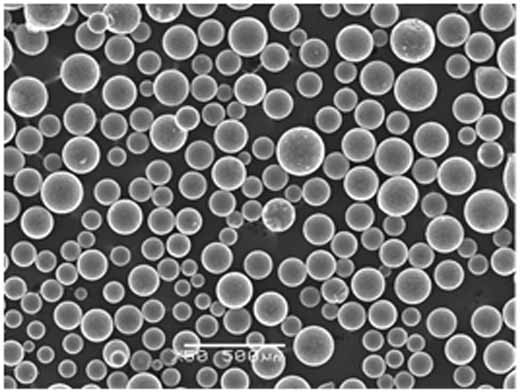
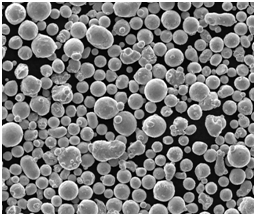
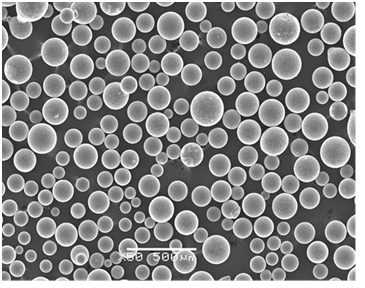
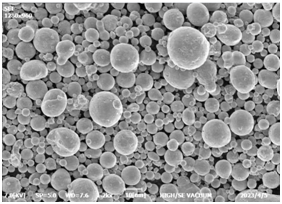
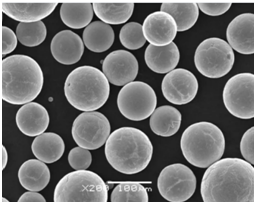
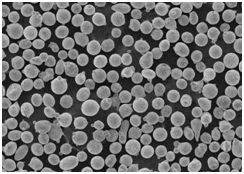
焼結硬化合金粉末の用途
焼結硬化合金粉末は、その卓越した機械的特性とコストパフォーマンスにより、幅広い用途に使用されています。
| 産業 | 一般的なアプリケーション | メリット |
|---|---|---|
| 自動車 | ギア、トランスミッション部品、エンジン部品 | 高強度、耐摩耗性、費用対効果の高い生産 |
| 航空宇宙 | タービンブレード、構造部品 | 軽量、耐高温性 |
| 工具 | 切削工具、金型 | 優れた硬度、工具寿命の延長 |
| エレクトロニクス | ヒートシンク、コネクター | 良好な熱伝導性、耐食性 |
| メディカル | インプラント、手術器具 | 生体適合性、強度、耐食性 |
| 石油・ガス | ドリルビット、バルブ、シール | 高い耐摩耗性、耐食性 |
| 消費財 | 時計、宝石、高級家電 | 美しさ、耐久性 |
| 産業機械 | ベアリング、ギア、ファスナー | 高耐荷重、耐摩耗性 |
| ディフェンス | 防具、武器部品 | 高強度、耐衝撃性 |
| エネルギー | 燃料電池、バッテリー部品 | 高効率、長寿命 |
これらの用途は、さまざまな産業における焼結硬化合金粉末の汎用性と性能を浮き彫りにしている。
仕様、サイズ、等級、規格
焼結硬化合金粉末を選択する際には、特定の用途に適用される仕様、サイズ、等級、規格を考慮することが重要です。
| 金属粉モデル | 粒子径範囲(μm) | グレード | 標準準拠 |
|---|---|---|---|
| SH-42 | 10-50 | A2 | ASTM B783、MPIF 35 |
| SH-55 | 15-45 | B3 | ISO 5755, DIN 3572 |
| SH-62 | 20-60 | A1 | ASTM B783、ISO 4499 |
| SH-78 | 5-30 | C1 | ASTM B243、MPIF 35 |
| SH-81 | 25-70 | B1 | ISO 4499, DIN 30910 |
| SH-94 | 15-45 | A3 | ASTM B312、MPIF 35 |
| SH-100 | 10-40 | C2 | ISO 5755、ASM B312 |
| SH-120 | 10-50 | A2 | MPIF 35、DIN 30910 |
| SH-130 | 20-60 | B2 | ISO5755、ASM B243 |
| SH-145 | 15-55 | C1 | ASMB243、ISO5755 |
適切な等級と規格を選択することは、材料が用途に必要な性能基準を確実に満たすために極めて重要である。
サプライヤーと価格詳細
市場を理解する 焼結硬化合金粉末 は、十分な情報に基づいて購入を決定するのに役立ちます。以下は、これらのパウダーの主なサプライヤーと一般的な価格情報です。
| サプライヤー | 所在地 | 金属粉モデル | 価格帯(kgあたり) | 納期 |
|---|---|---|---|---|
| 先端金属粉末 | 米国 | SH-42、SH-55 | $20 – $50 | 2~4週間 |
| グローバル・パウダーズ社 | イギリス | SH-62、SH-78 | $25 – $60 | 3~6週間 |
| 冶金ソリューション | ドイツ | SH-81、SH-94 | $30 – $70 | 4~8週間 |
| パウダーテック | 中国 | SH-100、SH-120 | $15 – $40 | 3~5週間 |
| イースタン合金 | 日本 | SH-130、SH-145 | $35 – $75 | 2~5週間 |
価格は、サプライヤー、注文数量、アプリケーションの特定の要件によって異なる場合があります。
焼結硬化合金粉末の長所と短所
焼結硬化合金粉末には多くの利点がある一方で、一定の制限もあります。これらを理解することで、特定のニーズに最適な決定を下すことができます。
| アスペクト | メリット | 制限事項 |
|---|---|---|
| 生産プロセス | 焼結と硬化を組み合わせ、製造工程を削減 | 焼結条件の精密なコントロールが必要 |
| コスト | 処理工程の削減による総コストの低減 | 焼結設備への初期投資が高額になる可能性がある |
| 機械的特性 | 高い強度、耐摩耗性、靭性 | 特定の合金組成に限定 |
| 汎用性 | 幅広い用途に対応 | すべての高温用途に適しているわけではない |
| カスタマイズ | 特定の要件に合わせることができる | カスタム・パウダーは標準グレードより高価な場合がある |
| エネルギー効率 | 複合プロセスによるエネルギー消費の低減 | 個別に硬化させた材料と同じ特性が得られない場合がある。 |
これらの長所と短所は、焼結硬化合金粉末を使用する際のトレードオフを示すものであり、お客様の具体的な要件に基づいて十分な情報を得た上で決定を下すのに役立ちます。
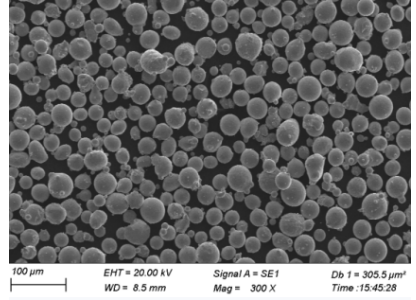
よくある質問
最後に、焼結硬化合金粉末に関するよくある質問を、すぐに参照できるように便利な表形式でご紹介します。
| 質問 | 回答 |
|---|---|
| 焼結硬化合金粉末とは? | 焼結硬化合金粉末は、焼結過程で硬化するように設計された金属粉末であり、追加の熱処理を必要としない。 |
| 焼結硬化粉末を使用する主な利点は何ですか? | コスト効率に優れ、高強度、耐摩耗性を備え、特定の用途に合わせることができる。 |
| 焼結硬化粉末はどのような産業でよく使われていますか? | 自動車、航空宇宙、工作機械、電子機器、医療、石油・ガス、消費財産業。 |
| 焼結硬化は従来の焼結とどう違うのですか? | 焼結硬化は、焼結と硬化を一度に行うため、製造時間を短縮し、材料特性を向上させます。 |
| 焼結硬化粉末はカスタマイズできますか? | はい、特定の用途の要求を満たすために、組成や加工パラメーターを調整することでカスタマイズすることができます。 |
| 焼結硬化合金粉末の限界は? | 焼結条件を正確に制御する必要があり、すべての高温用途に適しているとは限らない。 |
| 焼結硬化粉末のコストは、従来の粉末と比べてどうですか? | 焼結硬化粉末は、処理工程が少ないためコスト効率が高いが、設備への初期投資が高くつくことがある。 |
| 焼結硬化粉末は環境に優しいのか? | 製造工程が組み合わされることで、よりエネルギー効率が高くなり、製造に伴う環境への影響を全体的に軽減することができる。 |
| 一般的な金属粉末モデルにはどのようなものがありますか? | 例えば、SH-42、SH-55、SH-62、SH-78、SH-81、SH-94、SH-100、SH-120、SH-130、SH-145などがある。 |
| 焼結硬化合金粉末はどこで購入できますか? | 焼結硬化粉末は、Advanced Metal Powders、Global Powders Ltd.、PowderTechなどのサプライヤーから購入できる。 |
結論
焼結硬化合金粉末 は、強度、耐久性、コスト効率のユニークな組み合わせを提供し、材料科学における重要な進歩です。高性能の自動車部品や最先端の航空宇宙部品の開発において、これらの粉末は汎用性と信頼性の高いソリューションを提供します。焼結硬化合金粉末の組成、特性、利点、および用途を理解することで、生産プロセスを最適化し、優れた結果を達成するのに役立つ情報に基づいた意思決定を行うことができます。
